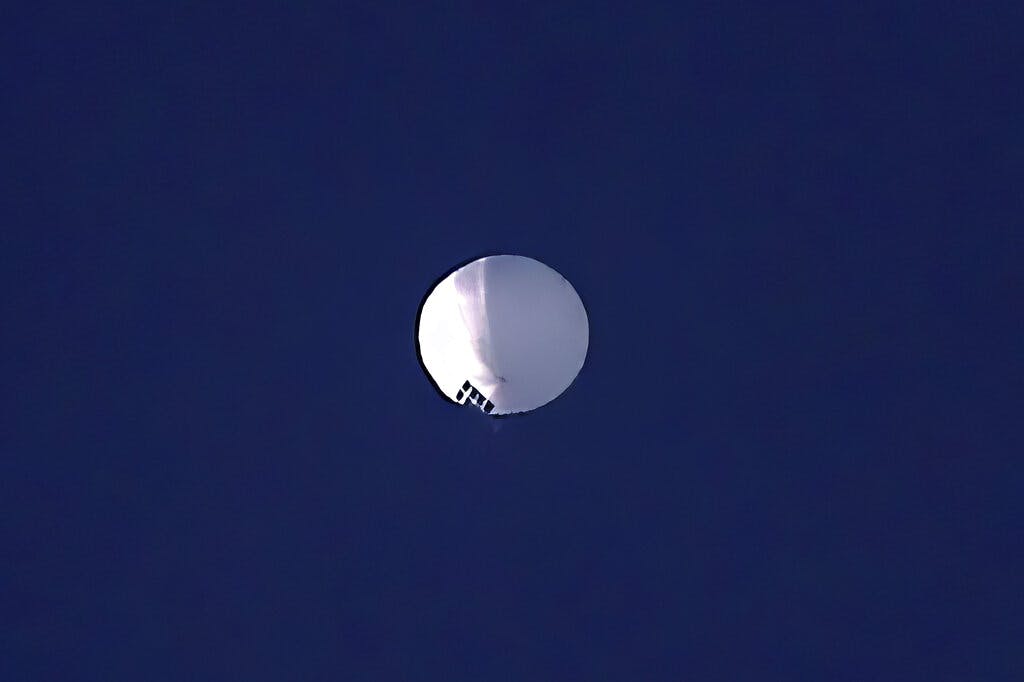Talk About Trial Balloons: Military Mulls Lighter-Than-Air Strategy To Help Defend Against Missiles
Lighter than air system is likened to a Ring doorbell video camera for America’s front porch.

To help defend against Chinese spy balloons and other incoming threats, America could develop and deploy some balloons of its own.
That’s the gist of the message that the commanding general of the U.S. Army Space and Missile Defense Command, Lieutenant General Daniel Karbler, delivered recently at an event organized by the Missile Defense Advocacy Alliance.
General Karbler, two retired generals, and the chairman of the advocacy group say that an unmanned platform taller than a tower but shorter than a satellite could be a crucial—and currently missing—piece of a “layered” defense.
The Department of Homeland Security’s Customs and Border Protection agency has a tethered aerostat called the Argos based at a Coast Guard station on South Padre Island, Texas. Israel’s air force reportedly operates a “Sky Dew” blimp that detects incoming threats. The U.S. military, though, lacks such elevated surveillance sensors.
In a September 8 presentation, General Karbler likened the ideal capability to a Ring video doorbell camera that could not only capture images of a package thief on a porch, but also spray gravy on the thief and then automatically unleash a German Shepherd. The sensors would help not only with surveillance but also with “fire control” to shoot down incoming missiles or other threats.
“Maybe the first place to take a look at putting this would be the defense of Guam,” General Karbler said.
In response to a question about whether a system of this sort could help Ukraine, General Karbler said generally: “An elevated sensor is going to help the commander’s overall situational awareness.”
“It’s criminal that we don’t have the capability,” said a retired Air Force major general, Charles Corcoran. “We saw this with the Chinese balloon.”
General Corcoran said it didn’t matter whether the Air Force, the Army, or some joint effort developed the “persistent overhead sensor.”
“I don’t care which service,” General Corcoran said. “As taxpayers, we should be demanding this. Congress should be demanding this.”
A retired Air Force lieutenant general, Jon “Ty” Thomas, said that the airships should be able to be relocated to the East Coast to defend against a threat from Russia. He said they could be stationed “far enough back” from the front lines that they wouldn’t be immediately shot down by enemies. “We’ve got to have it,” General Thomas said.
Between 1996 and 2015, the military had worked on developing a system known as the Joint Land Attack Cruise Missile Defense Netted Sensor System, or JLENS, spending hundreds of millions of dollars. In 2015, the tether broke on a balloon being tested at the Aberdeen Proving Ground in Maryland. The balloon floated away into central Pennsylvania, where it eventually landed, causing power outages.
“We were embarrassed about it happening, and so we shut it down,” General Karbler explained.
General Karbler said that an elevated sensor system could work alongside other systems such as the Navy’s E-2 Hawkeye Airborne Command and Control Aircraft, the Air Force’s AWACS or Airborne Warning and Control System, and the Space Force’s Hypersonic and Ballistic Tracking Space Sensor, with a goal of stopping as many missiles as possible, far away from U.S. territory. “We want max attrition as far forward as possible,” he said. “It’s got to be a layered approach.”
He said the cost-per-hour of an unmanned sensor is “significantly lower” than that of an aircraft flown by a human pilot.
Thomas said sentiment on Capitol Hill can swing rapidly. “They’ll be asking, ‘Why didn’t we get 20 of them last year?’” he predicted.
“This is a defensive system,” said the founder and chairman of the Missile Defense Advocacy Alliance, Riki Ellison. “It’s ridiculous that we do not have this.”
Defense acquisition timelines are painfully long. If Israel and the Customs and Border Protection already have versions of this technology up in the air, though, it’s hard to see why the Pentagon can’t make it happen, too.
The urgency is about moving it from “trial balloon” stage to operational fast enough so that the protection is in place. That is, deploying it before something more dangerous than a spy balloon comes from Iran, North Korea, or some other rogue state or strategic foe, headed toward an American city.

